Salvagem Grande N30 08 W15 52

Gryphon II
Chris and Lorraine Marchant
Fri 25 Sep 2009 22:28
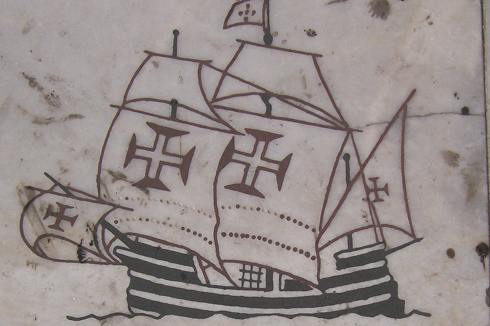 Having enjoyed the Desertas so much we decided to do a
detour to the much more remote Salvage Islands, half way to the Canaries. This
was another 140 miles, the winds were annoyingly light so this trip
involved a 33 hour passage, rather longer than hoped for and with little
happening at sea apart from the acrobats of the air - Corys Shearwater and some
fabulous skies as the sun was downing:
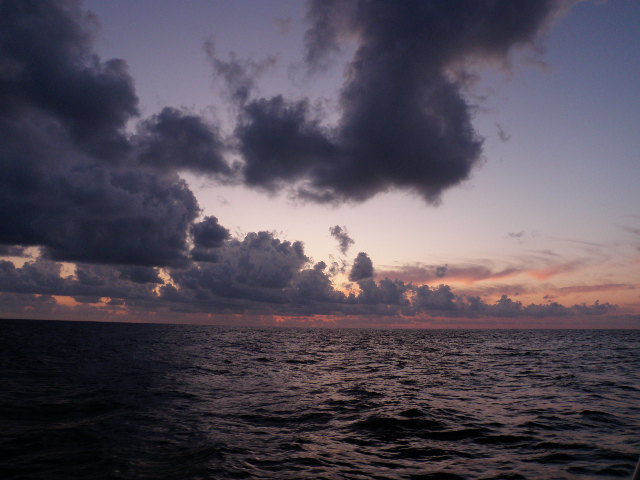  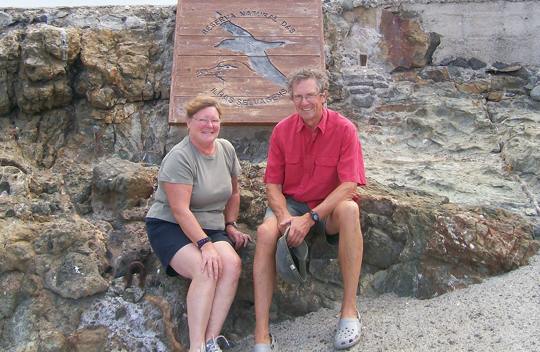 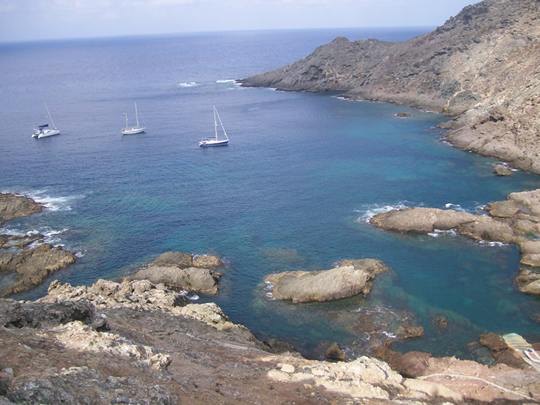 Like the Desertas, the Salvages are part of the
National Park and have wardens on hand. The islands are in the middle of nowhere
and we needed to be extremely careful on approach as they have not been
thoroughly surveyed. As the pilot book noted, "they are not called the Salvage
Islands for nothing", and just for emphasis, the wreck of a supertanker lies off
one island in this little archipelago.
We found a calm bay and anchored close
in, we were soon greeted by one of the wardens who spoke excellent
English. Later he snorkelled down to inspect our anchor to make sure it was
bedded into something on the extremely rocky bottom. We joined him for a swim
and snorkel, finding some interesting semi-tropical fish of various sizes. There
were some large jacks or bonito, not sure what exactly, swimming under the boat
but it is strictly no fishing in the park area unless you have a tuna fishing
permit. The following morning the warden came and collected us from
the boat and took us on a 2 hour walk around the island. Here it is not
seals but Corys Shearwaters that are the main species being protected
together with the total environment. A successful programme has been
undertaken to remove non indigenous animal species i.e. rabbits and rats, and
all non indigenous plant species have been removed, apart from a rather
delicious small tomato which the wardens like to eat! There are no trees, small
scrubby herbaceous plants and a few small pungent succulents. There is
no water on the island apart from when it rains so it is very desert
like.
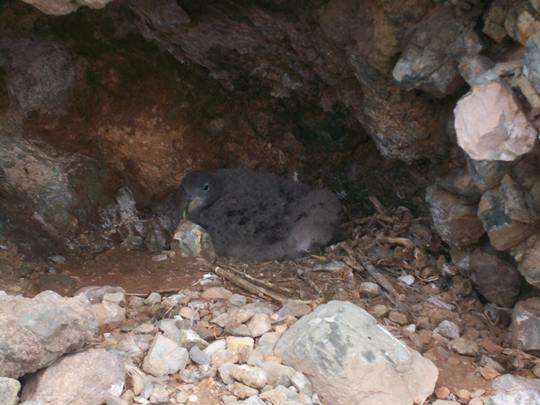 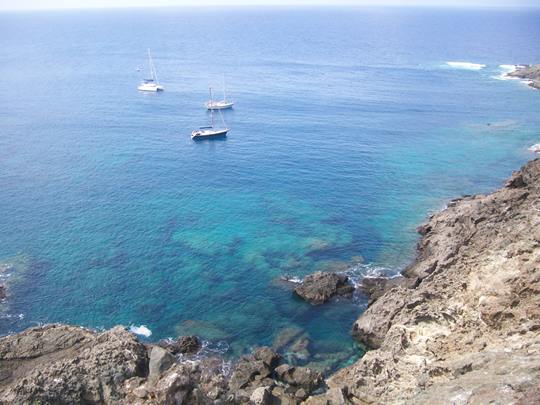 The island is home to over 150,000 of these birds in the
spring, although the numbers were far less whilst we were there as most had
fledged and flown the nest. The parents were mostly out at sea but large, fat,
fluffy chicks occupied nearly any hole of any size in the volcanic rock. Some of
these holes are just inches apart which led to some fierce fighting taking place
between neighbouring chicks. The feeling of isolation and desolation was
wonderful. The islands are 150 miles to the nearest permanently inhabited place.
The only reminders of civilisation being the wardens cottage and a lone tuna
fishing boat, that we saw catching fish even while moored in the bay.
It attracted the fish by spraying the surface of the sea and pulling out
the frenzied tuna and bonito on barbless hooks.
At night the darkness was complete except for
our anchor light and that of a German boat that arrived at the same time.
The effect was slightly spoilt when the warden said he had invited the crew of
the fishing boat over to watch football on his satellite telly! The only noise
at night was that of the returning Shearwaters that make a very un-birdlike
sound combining the qualities of an out of tune high pitched electronic organ
and 2 nasally challenged children having an arguement! Shearwaters
really sound like tubenoses, which they are. This is the perfect place for these
birds as they now have no predators on the island.
|